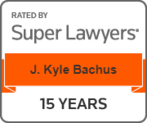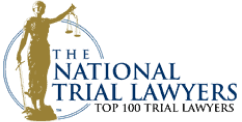The 11 Steps In a Criminal Case
When a person has broken the law or committed a crime against society, the state will bring a lawsuit against that person. This legal action is called a criminal case, which is meant to determine guilt beyond a reasonable doubt and hold the responsible party accountable with punishment that fits the crime.
Bachus & Schanker Wins – Over $1 Billion Recovered
- 1. The police make an arrest, or a ticket is issued.
- 2. The prosecutor decides to proceed with the criminal case.
- 3. The defendant appears in court for the arraignment.
- 4. The defendant asks to be released pending trial.
- 5. The judge sets the trial date.
- 6. The trial's discovery period begins.
- 7. Plea negotiations start.
- 8. The case goes to trial.
- 9. The jury reaches a verdict.
- 10. The judge sets a sentencing date.
- 11. The defendant serves the sentence.
- How can the family of wrongful death victims get justice?
- Visit Our Office Locations Across Colorado & Beyond
- You Deserve Fair Compensation
Here are the several parts of a criminal case and what happens during each step as adapted from Attorney Kyle Bachus’ book, Unthinkable.
1. The police make an arrest, or a ticket is issued.
For a criminal case to occur, the defendant must first commit a crime. According to the U.S. Department of Justice, the definition of a crime is an act or omission of an act that violates criminal law. This unlawful act is punishable by government authorities — most often in the state where the crime was committed.
Lesser violations of the law are known as misdemeanor crimes. Some examples of common misdemeanors include:
- Petty theft
- Reckless driving
- Trespassing
- Vandalism
- Resisting arrest
Other crimes are more serious and potentially hold more severe punishments if the defendant is found guilty. These crimes are referred to as a felony:
- Rape
- Murder
- Kidnapping
- Robbery
- Arson
If a person or party commits one of these crimes, the police will either make an arrest or issue the appropriate ticket and complete a police report, which will be crucial for the prosecutor.
2. The prosecutor decides to proceed with the criminal case.
The decision to proceed with the case lies with the prosecutor. The prosecutor’s office reviews the crime details from the police report to see if there is enough evidence to support going to trial. In criminal cases, the prosecutor must prove beyond a reasonable doubt that the defendant committed the crime. If the evidence cannot show that the accused person is guilty, they may not proceed with the case.
However, if there is enough evidence to make a strong case, the prosecutor’s office will file a complaint to proceed with the legal action.
3. The defendant appears in court for the arraignment.
The next step in the process is for the accused person to make their first appearance in court. Also called an arraignment, the purpose of this appearance is twofold:
- A formal reading of the criminal charges
- The accused enters a plea
The arraignment allows the defendant to hear the judge read the accused crimes and respond to the charges. The defendant may not appear in court for some misdemeanor charges. However, the accused must be in court for a felony charge.
4. The defendant asks to be released pending trial.
After the arraignment, the accused party may ask the judge to remain out of jail pending the criminal trial. The judge can choose to set bail, which is a sum of money the defendant must provide as a formal guarantee that they will show up for their scheduled trial.
The judge may also allow the accused to remain free pending trial with no required bail. This decision often depends on the severity of the crime and if it’s the defendant’s first offense. However, the judge can also choose to deny bail altogether based on these circumstances:
- If an offense is punishable by death
- There is a parole hold
- A public safety exception
- Disrespectful behaviors in court, such as shouting
- Failing to show up to court
5. The judge sets the trial date.
The criminal justice system in the United States must ensure the accused has a fair and speedy trial. A vital piece of that puzzle is to schedule the trial date during a pre-trial conference with all parties involved in the case. Whether the defendant remains in jail or is out on bail, the trial date should be set in a timely manner.
6. The trial’s discovery period begins.
The prosecutor’s office must release all the evidence they have against the defendant to make the trial as fair as possible for the accused to defend themselves against the charges. Referred to as the “discovery period,” this process allows the accused’s legal team to prepare for the trial with all the details necessary to make a strong defense.
7. Plea negotiations start.
The majority of criminal cases don’t actually end in a trial. In fact, it’s estimated that over 90% of criminal cases end with plea agreements or plea bargains. A plea agreement means the defense negotiates a deal with the prosecution that involves pleading guilty to a lesser charge in exchange for a lighter sentence or punishment.
For example, a defendant pleads guilty to a lesser offense to avoid jail time. Instead, the person may be required to pay fines, complete a certain amount of hours of community service, or be monitored by a probation officer for a set timeframe.
8. The case goes to trial.
Criminal cases not ending in a plea agreement during the negotiation phase go to a jury trial. During this step, the prosecution will present their evidence and facts to a jury while the defense tries to discredit the evidence.
Criminal trials involve:
- Opening statements
- Case presentations, witness testimony, and objections
- Closing arguments from both sides
- Jury instructions from the judge
9. The jury reaches a verdict.
After hearing both sides of the argument, the jury must decide an outcome. They go into deliberation to discuss the evidence presented during the trial and determine whether or not the defendant is guilty. Once they reach an agreement, they return to court to read the verdict aloud before the judge, defendant, prosecution, and other involved parties.
10. The judge sets a sentencing date.
The judge will then set a date for sentencing if the jury returned with a guilty verdict or if both sides reached a plea agreement. The defendant and victims will have the opportunity to make a statement during the sentencing.
11. The defendant serves the sentence.
During the sentencing, the judge determines the sentence for the person who committed the crime. It often means jail time, fines, and community services. The probation department may get involved to ensure the defendant fulfills the sentencing terms.
How can the family of wrongful death victims get justice?
While a criminal case punishes the accused for their crime against society, a civil lawsuit can help victims get compensation for their losses. If your family has experienced wrongful death due to medical malpractice or other personal injuries, you can seek justice for the death of a loved one with a wrongful death claim.
A wrongful death attorney can help with filing a legal claim, recovering compensation, and ensuring the victim’s family members take action before the statute of limitations expires. At Bachus & Schanker, our compassionate and supportive team can help you through this difficult time by fighting on your behalf.
We can help families throughout Colorado with offices across the state in:
Contact us now to learn more about our services and how we can help you get the maximum compensation for your claim.
Sources:
Inciardi, J and McBride, D. (1970). Considerations in the Definition of Criminality for the Assessment of the Relationship Between Drug Use and Crime.
Schwartzbach, M. (2022). How Many Criminal Cases Actually Go to Trial?.
Visit Our Office Locations Across Colorado & Beyond
Serving Clients Nationwide
You Deserve Fair Compensation
Don’t let the insurance companies intimidate you into accepting less than you deserve. We’re ready to fight for you.

Written and Legally Reviewed By: Kyle Bachus
4.6 ★★★★★ 1,461 Google Reviews
Kyle is a member of the Colorado Bar associations and has served on the Board of Directors of the Colorado Trial Lawyers Association for more than twenty years in total. Over the years, Kyle has achieved justice for many clients. He has served on numerous committees and repeatedly won recognition from his peers at both the state and national level. He is proud of the role he has played in the passage of state and national legislation to protect consumers and is a frequent speaker and guest lecturer.







